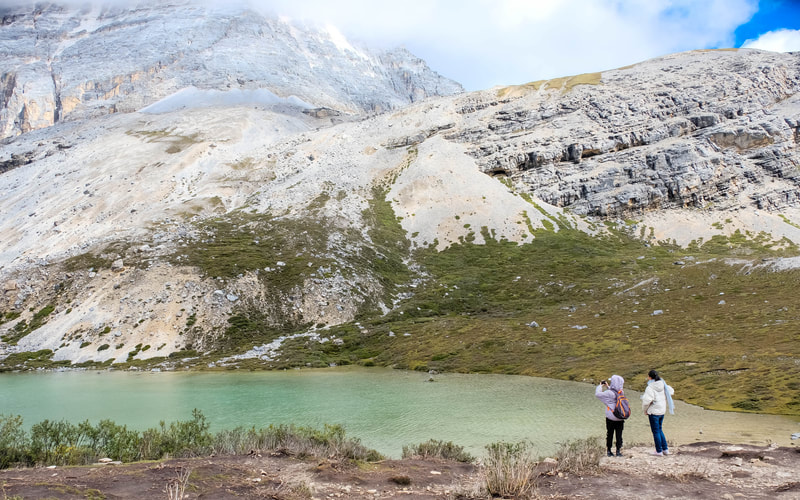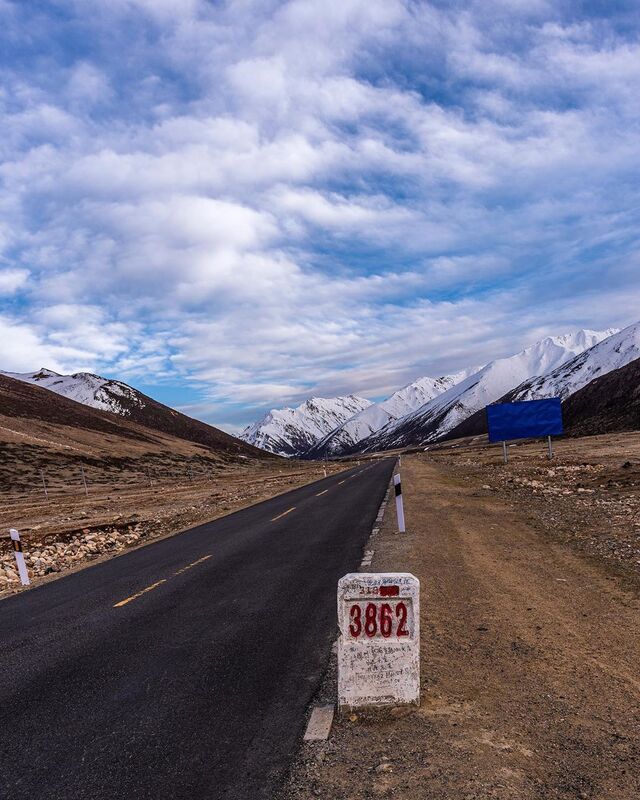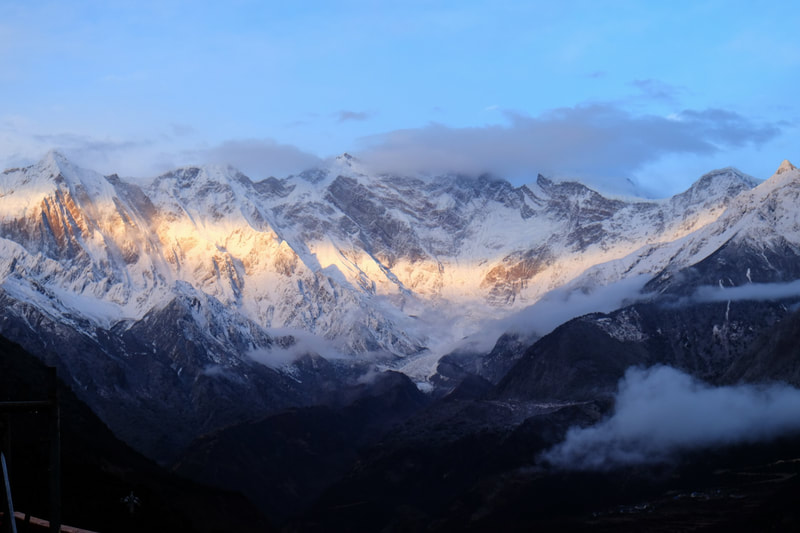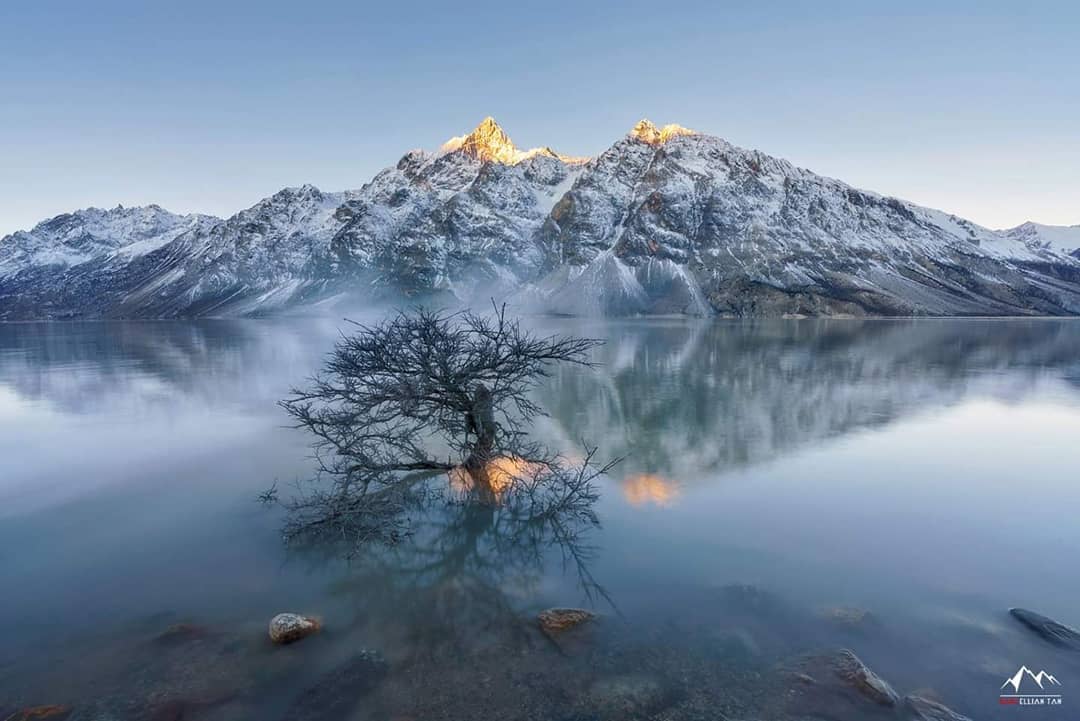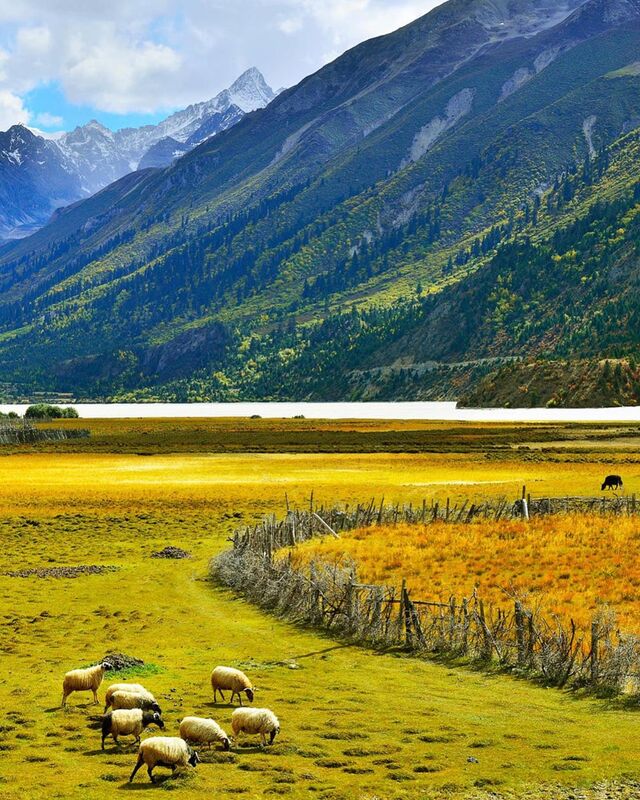The G318 China National Highway runs from Shanghai to Zhangmu along the Nepalese border. It is the longest roadway of its type in the country, ending in Tibet. This journey might feel long to some, but it also provides some of the most impressive sights you can see from Nyingchi and Western Sichuan.
The southern route is often thought of as a pilgrimage to Lhasa, which is the most revered city in Tibet. You can see the stunning snowy mountain of Mount Gongga, the Yarlung Zangbo Grand Canyon, and the impressive Maoya Grasslands along this highway. It is also one of the best opportunities to explore Tibetan culture authentically.
Some sections of the highway create experiences on their own. One such place is the 72 turns found at the Nujiang River.
The G318 is sometimes referred to as “China’s Landscape Avenue.” If you’re ready to touch the sky, then this adventure is for you.
The southern route is often thought of as a pilgrimage to Lhasa, which is the most revered city in Tibet. You can see the stunning snowy mountain of Mount Gongga, the Yarlung Zangbo Grand Canyon, and the impressive Maoya Grasslands along this highway. It is also one of the best opportunities to explore Tibetan culture authentically.
Some sections of the highway create experiences on their own. One such place is the 72 turns found at the Nujiang River.
The G318 is sometimes referred to as “China’s Landscape Avenue.” If you’re ready to touch the sky, then this adventure is for you.
HIGHLIGHTS
|
G318
Yading National Park Ranwu lake Midui Glacier Bome Tongmai suspension bridge |
Grand peak of Mt. Namche Barwa
Pagsum Lake Nyingchi Yamdrok Lake Potala Palace Namtso Lake |
OVERVIEW
Yading Nature Reserve
A breathtaking sight found in China, Yading Nature Reserve has become a popular destination for hiking. The mountains are a sight to see and its significance within the Buddhist community makes it a well -loved attraction. It was officially declared a nature reserve for the first time during the end of the 1990s.
For anyone who wants to be closer to nature, hiking through Yading is a recommended activity. Most people find that the best season to visit is autumn. As a natural reserve it is the home of China’s three holy mountains, which are Jampelyang, Chenresig and Chana Dorje. The belief held by Tibetan Buddhists is that these mountains are symbols of energy, compassion and wisdom; three things that the Buddhists believe are necessary when it comes to achieving enlightenment.
A breathtaking sight found in China, Yading Nature Reserve has become a popular destination for hiking. The mountains are a sight to see and its significance within the Buddhist community makes it a well -loved attraction. It was officially declared a nature reserve for the first time during the end of the 1990s.
For anyone who wants to be closer to nature, hiking through Yading is a recommended activity. Most people find that the best season to visit is autumn. As a natural reserve it is the home of China’s three holy mountains, which are Jampelyang, Chenresig and Chana Dorje. The belief held by Tibetan Buddhists is that these mountains are symbols of energy, compassion and wisdom; three things that the Buddhists believe are necessary when it comes to achieving enlightenment.
Ranwu Lake
Ranwu Lake, one of the largest lake in eastern Tibet which also called "the Tibetan Switzerland." It is located on the edge of the Sichuan-Tibet Highway, 89km southwest of the city of Basu County in the Qamdo County of Tibet. It is the main source of the Palung Zangbo, a tributary of the Yarlung Zangbo River.
With an altitude of 3,850 meters, the lake is surrounded by the Gangrigabu Snow Mountain in the southwest, the Azhagongla Glacier in the south and the Bosula Peak in the northeast, with the famous Lagu glacier extending to the lake from the north. The melted snow and ice supply the lake with sufficient water and are also the source of many rivers such as Yaluzhangbu River. The lake stretches more than 10 kilometers toward the west and shrinks into a narrow river valley.
Ranwu Lake, one of the largest lake in eastern Tibet which also called "the Tibetan Switzerland." It is located on the edge of the Sichuan-Tibet Highway, 89km southwest of the city of Basu County in the Qamdo County of Tibet. It is the main source of the Palung Zangbo, a tributary of the Yarlung Zangbo River.
With an altitude of 3,850 meters, the lake is surrounded by the Gangrigabu Snow Mountain in the southwest, the Azhagongla Glacier in the south and the Bosula Peak in the northeast, with the famous Lagu glacier extending to the lake from the north. The melted snow and ice supply the lake with sufficient water and are also the source of many rivers such as Yaluzhangbu River. The lake stretches more than 10 kilometers toward the west and shrinks into a narrow river valley.
Mt. Namche Barwa
The most beautiful snow-capped mountain in China, Namche Barwa is the highest mountain in Nyingchi Prefecture. It, soaring 7,782 m above sea level, is situated on the eastern dege of the Himalayan range in southeast of Tibet. Mt. Namche Barwa and Mt. Gyala Peri (7150 m) climbs thousands of feet from 2 sides of Yarlung Tsangpo River, creating the world’s deepest valley-- Namche Barwa Valley. The average depth of the valley is 5000 m, with the lowest point 5382 m. In 1994, the Great Canyon of the Namjagbarwa Valley was confirmed as the largest in the world by both the American Geographic Committee and the Guinness Book of World Records.
The best and popular place to shoot the grand peak of Mt. Namche Barwa is at the Serkym La mountain pass.
The most beautiful snow-capped mountain in China, Namche Barwa is the highest mountain in Nyingchi Prefecture. It, soaring 7,782 m above sea level, is situated on the eastern dege of the Himalayan range in southeast of Tibet. Mt. Namche Barwa and Mt. Gyala Peri (7150 m) climbs thousands of feet from 2 sides of Yarlung Tsangpo River, creating the world’s deepest valley-- Namche Barwa Valley. The average depth of the valley is 5000 m, with the lowest point 5382 m. In 1994, the Great Canyon of the Namjagbarwa Valley was confirmed as the largest in the world by both the American Geographic Committee and the Guinness Book of World Records.
The best and popular place to shoot the grand peak of Mt. Namche Barwa is at the Serkym La mountain pass.
Potala Palace
The Potala Palace, winter palace of the Dalai Lama since the 7th century, symbolizes Tibetan Buddhism and its central role in the traditional administration of Tibet. The complex, comprising the White and Red Palaces with their ancillary buildings, is built on Red Mountain in the centre of Lhasa Valley, at an altitude of 3,700m, the highest palace in the world. Also founded in the 7th century, the Jokhang Temple Monastery is an exceptional Buddhist religious complex. Norbulingka, the Dalai Lama's former summer palace, constructed in the 18th century, is a masterpiece of Tibetan art. The beauty and originality of the architecture of these three sites, their rich ornamentation and harmonious integration in a striking landscape, add to their historic and religious interest. It is one of the World Heritage Site since 1994.
Still, the Potala Palace remains an iconic part of the region and a mecca for Buddhists around the world. The name Potala is a nod to a sacred mountain in India, where the Buddha of compassion is said to dwell. Year-round, thousands of religious pilgrims circle the perimeter of the palace with prayer wheels and beads to ask for blessing. Many have traveled thousands of miles by foot just to pay their respects.
The Potala Palace, winter palace of the Dalai Lama since the 7th century, symbolizes Tibetan Buddhism and its central role in the traditional administration of Tibet. The complex, comprising the White and Red Palaces with their ancillary buildings, is built on Red Mountain in the centre of Lhasa Valley, at an altitude of 3,700m, the highest palace in the world. Also founded in the 7th century, the Jokhang Temple Monastery is an exceptional Buddhist religious complex. Norbulingka, the Dalai Lama's former summer palace, constructed in the 18th century, is a masterpiece of Tibetan art. The beauty and originality of the architecture of these three sites, their rich ornamentation and harmonious integration in a striking landscape, add to their historic and religious interest. It is one of the World Heritage Site since 1994.
Still, the Potala Palace remains an iconic part of the region and a mecca for Buddhists around the world. The name Potala is a nod to a sacred mountain in India, where the Buddha of compassion is said to dwell. Year-round, thousands of religious pilgrims circle the perimeter of the palace with prayer wheels and beads to ask for blessing. Many have traveled thousands of miles by foot just to pay their respects.
Nyingchi
The Nyingchi area, known as the “Tibet Jiangnan”, is located in the southeast of Tibet and east of Lhasa. Most of Linzhi's climate is humid and the scenery is pleasant. The ethnic minorities are mainly Menba and Lhoba. Traveling in Nyingchi is an unique experience. Nyingchi is blessed with beautiful lakes, deep gorges, immense forests, azalea-filled meadows etc. Stepping into Nyingchi, you will find the reason why Nyingchi is renowned as the "East Swizerland" and "Jiangnan of Tibet"(Jiangnan in Chinese means the fertile and prosperous area in the south of the Yangtze). In fact, there are no peach flowers in Swizerland and no snow-capped peaks in Jiangnan. So Nyingchi really enjoys the incomparable beauty.
With the lowest elevation of only 900m and the highest elevation of 7,782m (altitude of Namjagbarwa Peak), Nyingchi owns the biggest elevation gap in the world. The average altitude is about 3,100m, making it the lowest area of Tibet.
The Nyingchi area, known as the “Tibet Jiangnan”, is located in the southeast of Tibet and east of Lhasa. Most of Linzhi's climate is humid and the scenery is pleasant. The ethnic minorities are mainly Menba and Lhoba. Traveling in Nyingchi is an unique experience. Nyingchi is blessed with beautiful lakes, deep gorges, immense forests, azalea-filled meadows etc. Stepping into Nyingchi, you will find the reason why Nyingchi is renowned as the "East Swizerland" and "Jiangnan of Tibet"(Jiangnan in Chinese means the fertile and prosperous area in the south of the Yangtze). In fact, there are no peach flowers in Swizerland and no snow-capped peaks in Jiangnan. So Nyingchi really enjoys the incomparable beauty.
With the lowest elevation of only 900m and the highest elevation of 7,782m (altitude of Namjagbarwa Peak), Nyingchi owns the biggest elevation gap in the world. The average altitude is about 3,100m, making it the lowest area of Tibet.
and many other more!
穿越天路,邂逅淨土圣城
Overland Route to Tibet - A Road in the SkY
Driving on the famous G318 National Highway will let you experience majestic mountains standing tall and proud. Beautiful valleys are waiting for you to explore. Lakes, glaciers, and unique cultural opportunities provide fantastic opportunities for a quick detour.
There are many reasons why this adventure could be the experience of a lifetime. You might come to photograph the incredible landscapes. It may be a way to learn more about Tibet and the local culture.
The reasons for coming might vary, but the results are always the same. When you traverse the road in the sky, what you see will take your breath away.
DATES
25 April 2020 – 9 May 2020
THE ITINERARY
Day 1 – Saturday, 25 April
Accommodation @ Chengdu
Day 2 – Sunday, 26 April (Breakfast, Lunch, Dinner)
Accommodation @ Xinduqiao
Altitude: 3,400 meters
Travel Distance: 380KM, estimated 8 hours (with lunch and sightseeing stops)
Day 3 – Monday, 27 April (Breakfast, Lunch, Dinner)
Accommodation @ Daocheng
Altitude: 3,300 meters
Travel Distance: 350KM, estimated 8 hours (with lunch and sightseeing stops)
Day 4 – Tuesday, 28 April (Breakfast, Lunch, Dinner)
Accommodation @ Yading Village
Altitude: 4,060 meters
Estimated hiking duration: 3 – 4 hours, 3km (return way)
Day 5- Wednesday, 29 April (Breakfast, Dinner)
Accommodation @ Daocheng
Altitude: 3,300 meters
Estimated hiking duration: 6 - 8 hrs, 10.5km (return way)
* Day 6 – Thursday, 30 April (Breakfast, Lunch, Dinner)
Accommodation @ Markam
Altitude: 3,870 meters
Travel Distance: 434KM, estimated 8 hours (with lunch and sightseeing stops)
Day 7 – Friday, 1 May (Breakfast, Lunch, Dinner)
Accommodation @ Baxoi
Altitude: 3,260 meters
Travel Distance: 361KM, estimated 8 hours (with lunch and sightseeing stops)
Day 8 – Saturday, 2 May (Breakfast, Lunch, Dinner)
Accommodation @ Bome
Altitude: 2,725 meters
Travel Distance: 217KM, estimated 6 hours (with lunch and sightseeing stops)
Day 9 – Sunday, 3 May (Breakfast, Lunch, Dinner)
Accommodation @ Nyingchi
Altitude: 2,930 meters
Travel Distance: 234KM, estimated 6 hours (with lunch and sightseeing stops)
Day 10 – Monday, 4 May (Breakfast, Lunch, Dinner)
Accommodation @ Lhasa
Altitude: 3,700 meters
Travel Distance: 400km, estimated 9hrs hours (with lunch and sightseeing stops)
Day 11 – Tuesday, 5 May (Breakfast, Lunch, Dinner)
Accommodation @ Lhasa
Altitude: 3,700 meters
Travel Distance: 260km, estimated 3hrs hours
Day 12 – Wednesday, 6 May (Breakfast, Lunch, Dinner)
Accommodation @ Lhasa
Altitude: 3,700 meters
Day 13 – Thursday, 7 May (Breakfast, lunch, Dinner)
Accommodation @ Lhasa
Altitude: 3,700 meters
Travel Distance: 300km, estimated 8hrs hours (with lunch)
Day 14 – Friday, 8 May (Breakfast, Lunch, Dinner)
Accommodation @ Chengdu
Day 15 – Saturday, 9 May (Breakfast)
* subjected to permission granted for the entry permit using the 318 National Highway to enter (from China to Tibet). Else an alternative route (Plan B) will be given to our participants.
** The Organisers reserve the right to cancel, postpone or amend the itinerary due to unforseen circumstances such as extreme weather conditions or terrorism or other activities that may affect the safety of the team members.
Accommodation @ Chengdu
- Evening arrive at Chengdu International Airport
- Coach pick-up transfer to hotel
- Dinner, rest and relax
Day 2 – Sunday, 26 April (Breakfast, Lunch, Dinner)
Accommodation @ Xinduqiao
Altitude: 3,400 meters
Travel Distance: 380KM, estimated 8 hours (with lunch and sightseeing stops)
- Start our Sichuan adventures road trip after breakfast
- Drive to Kangding, Xinduqiao
- Lunch at Ya-an
- Zheduo Mountain
- Check-in hotel, dinner and rest
Day 3 – Monday, 27 April (Breakfast, Lunch, Dinner)
Accommodation @ Daocheng
Altitude: 3,300 meters
Travel Distance: 350KM, estimated 8 hours (with lunch and sightseeing stops)
- Check-out hotel after breakfast
- Heading to Daocheng via the most scenic national way G318
- 18 bends scenic viewing point
- Litang, the highest town in the world
- Check-in hotel, dinner and rest early
Day 4 – Tuesday, 28 April (Breakfast, Lunch, Dinner)
Accommodation @ Yading Village
Altitude: 4,060 meters
Estimated hiking duration: 3 – 4 hours, 3km (return way)
- Take sightseeing bus to our Yading Lodge
- Check-in at Yading Lodge and Lunch
- After Lunch, start our first hike at Yading Nature Park
- Exploring the beauty of the Pearl Lake (4080m), located at the foot of Mount Chenrisig, the highest holy peak of the park.
Day 5- Wednesday, 29 April (Breakfast, Dinner)
Accommodation @ Daocheng
Altitude: 3,300 meters
Estimated hiking duration: 6 - 8 hrs, 10.5km (return way)
- Start our 2nd day hike and exploration of the Yading Nature Park (with your self-prepared lunch on the go)
- Start from Luorong Pasture to Milk Lake and Five Colors Lake
- After hike, gather at lodge lobby and leaving Yading Village to Daocheng
- Check-in hotel at Daocheng.
- Dinner and early rest.
* Day 6 – Thursday, 30 April (Breakfast, Lunch, Dinner)
Accommodation @ Markam
Altitude: 3,870 meters
Travel Distance: 434KM, estimated 8 hours (with lunch and sightseeing stops)
- Continues our journey on G318 to Markam, the first county of Tibet entry.
- Litang
- Haizi Mountain
- Sister Lake
- Check-in hotel at Markam.
- Dinner and early rest.
Day 7 – Friday, 1 May (Breakfast, Lunch, Dinner)
Accommodation @ Baxoi
Altitude: 3,260 meters
Travel Distance: 361KM, estimated 8 hours (with lunch and sightseeing stops)
- Continues our journey to Baxoi county
- Bangda Grassland
- 72 bends
- Nujiang Canyon
- Check-in hotel at Baxoi.
- Dinner and early rest.
Day 8 – Saturday, 2 May (Breakfast, Lunch, Dinner)
Accommodation @ Bome
Altitude: 2,725 meters
Travel Distance: 217KM, estimated 6 hours (with lunch and sightseeing stops)
- Continue our journey to Bome
- Ranwu Lake, explore the largest lake in Eastern Tibet.
- Midui Galcier
- Bome Peach Blossom Valley
- Check-in hotel at Bome.
- Dinner and early rest.
Day 9 – Sunday, 3 May (Breakfast, Lunch, Dinner)
Accommodation @ Nyingchi
Altitude: 2,930 meters
Travel Distance: 234KM, estimated 6 hours (with lunch and sightseeing stops)
- Heading to Nyingchi by go through the beautiful green valleys, with Snow Mountains behind the forested mountains and with colourful of wild blossom that are knowns as Tibetan Switzerland.
- Tongmi bridge
- Lulang Forest - Top alpine scenery of Tibet
- Serkym la scenic spot
- View of Mt. Namche Barwa
- Check-in hotel at Nyingchi.
- Dinner and early rest.
Day 10 – Monday, 4 May (Breakfast, Lunch, Dinner)
Accommodation @ Lhasa
Altitude: 3,700 meters
Travel Distance: 400km, estimated 9hrs hours (with lunch and sightseeing stops)
- Continue our journey to Lhasa, the holy city.
- Pagsum Lake
- Check-in hotel at Lhasa.
- Dinner and early rest.
Day 11 – Tuesday, 5 May (Breakfast, Lunch, Dinner)
Accommodation @ Lhasa
Altitude: 3,700 meters
Travel Distance: 260km, estimated 3hrs hours
- Morning after breakfast, leaving to Yamdrok Lake
- Explore the freshwater lake, one of the largest sacred lake in Tibet
- Drive back to Lhasa after lunch
- Free and easy
- Dinner and follow by Lhasa night view
Day 12 – Wednesday, 6 May (Breakfast, Lunch, Dinner)
Accommodation @ Lhasa
Altitude: 3,700 meters
- Full day exploration at Lhasa
- Potala Palace
- Jokhang Temple
- Barkhor Street, one of the ancient street in Lhasa
- Dinner, free and easy
Day 13 – Thursday, 7 May (Breakfast, lunch, Dinner)
Accommodation @ Lhasa
Altitude: 3,700 meters
Travel Distance: 300km, estimated 8hrs hours (with lunch)
- Morning drive towards to Namtso Lake.
- Lunch at Damxung
- Explore Namtso lake, one of the holy lake in Tibet.
- Dinner, free and easy
Day 14 – Friday, 8 May (Breakfast, Lunch, Dinner)
Accommodation @ Chengdu
- Our last day at Lhasa start with nice sunrise, and follow by Peach Blossom and visit Sera Monastery is one of the "great three" Gelug university monasteries of Tibet .
- Afternoon arrive Lhasa Gonggar Airport and take flight back to Chengdu
- Arrive in Chengdu Shuangliu Airport at night
- Coach pickup and transfer to hotel
Day 15 – Saturday, 9 May (Breakfast)
- Free and easy
- Coach pickup and transfer to airport after lunch
- ETA 4pm to arrive Chengdu International Airport
- Flight departure at 6:25pm to Singapore
* subjected to permission granted for the entry permit using the 318 National Highway to enter (from China to Tibet). Else an alternative route (Plan B) will be given to our participants.
** The Organisers reserve the right to cancel, postpone or amend the itinerary due to unforseen circumstances such as extreme weather conditions or terrorism or other activities that may affect the safety of the team members.
LAND COST: $1700 USD
Max Size: 20 excluding host
1) Early Bird (Deposit made by 1 November 2019) $1600 USD
2) Group Signup (2 participants and above): $1600 USD
(Promotions above are non-stackable.)
SGD 500 deposit will be collected to confirm your slot.
Balance to be made latest by February 2020.
What does your package include?
- Local transportation from Day 1 to day 15
- Entry permit to Tibet
- Driver and local guide
- All entrance and permit for the national scenic parks.
- 14 nights accommodation as stated.
- All Meals except D5 lunch, D15 Lunch and dinner.
- Local accidental insurance
Excluding:
- D5 lunch, D15 Lunch and dinner
- Personal Travel insurance
- International air fare (Singapore to Chengdu)
- Domestic flights
- All other meals that not mentioned above
- All other admission/activity/performance fee that not mentioned above
- Gratuities
- Personal expenses
- Laundry
- Visa entry if required
- Anything else not mentioned in include list.
Step 1: Deposit of SGD 500 via ATM/Bank transfer to ADVENTURES UNLIMITED, DBS CURRENT A/C - 0039351950.
Step 2: Whatapp proof of payment receipt to 91020550 (IMPORTANT: PLEASE INDICATE "2020 04 25 Tibet 318"
Step 3: Receipt for payment will be issued and further instruction will be provided.
Step 4: Pre trip briefing will be arranged and you will be added into a dedicated whatsapp chat for this trip 2 months before the trip.
Step 5: Balance payment to be made latest by FEBRUARY 2020.
Refund Policy
Deposit (non-refundable)
Until 12 weeks prior to departure – 100% Refund of balance paid
10 weeks prior to departure – 50% Refund of balance paid
8 weeks prior to departure – 0% Refund of balance paid
Recommended flight
Details will be given to confirmed participants.
Others:
1. This event is organised by Adventures Unlimited (TA02844), a licensed travel agent registered with the Singapore Tourism Board.
2. Insurance
From 15 July 2015, a travel agent is required to inform and ask attending participants if it is their wish to purchase travel insurance that includes coverage for business insolvency of travel agencies when:
– they are buying a leisure travel product/package; or
– their travel product/package costs at least S$1,000 (including GST) per person; or
– they are paying a deposit or payment of at least S$500 per person.
|
THIS EVENT IS BACKED BY ADVENTURES UNLIMITED's TRAINING GUARANTEE. We train you to get ready for this trek, or your money back* * Terms and conditions apply Find out more information about our Training guarantee here. |
|
A word about trekking in high altitude places
At Adventures Unlimited, we take our participant's health and safety concerns seriously. Instances of acute mountain sickness (AMS) can affect your heart, lungs, muscles, and sensory system. If one's condition is extreme and he/she has little access to treatment, difficulties can prompt swelling in the cerebrum and lungs, bringing about unconsciousness or even death. Learning to anticipate, minimise and treat AMS when dealt with symptoms is vital in the mountains. At Adventures Unlimited, we bring our medical and monitoring equipments whenever we embark on a trip. We do not soley rely on our foreign partners and operators to supply them. Please click here to read and understand Adventures Unlimited's approach in dealing with acute mountain sickness. |




